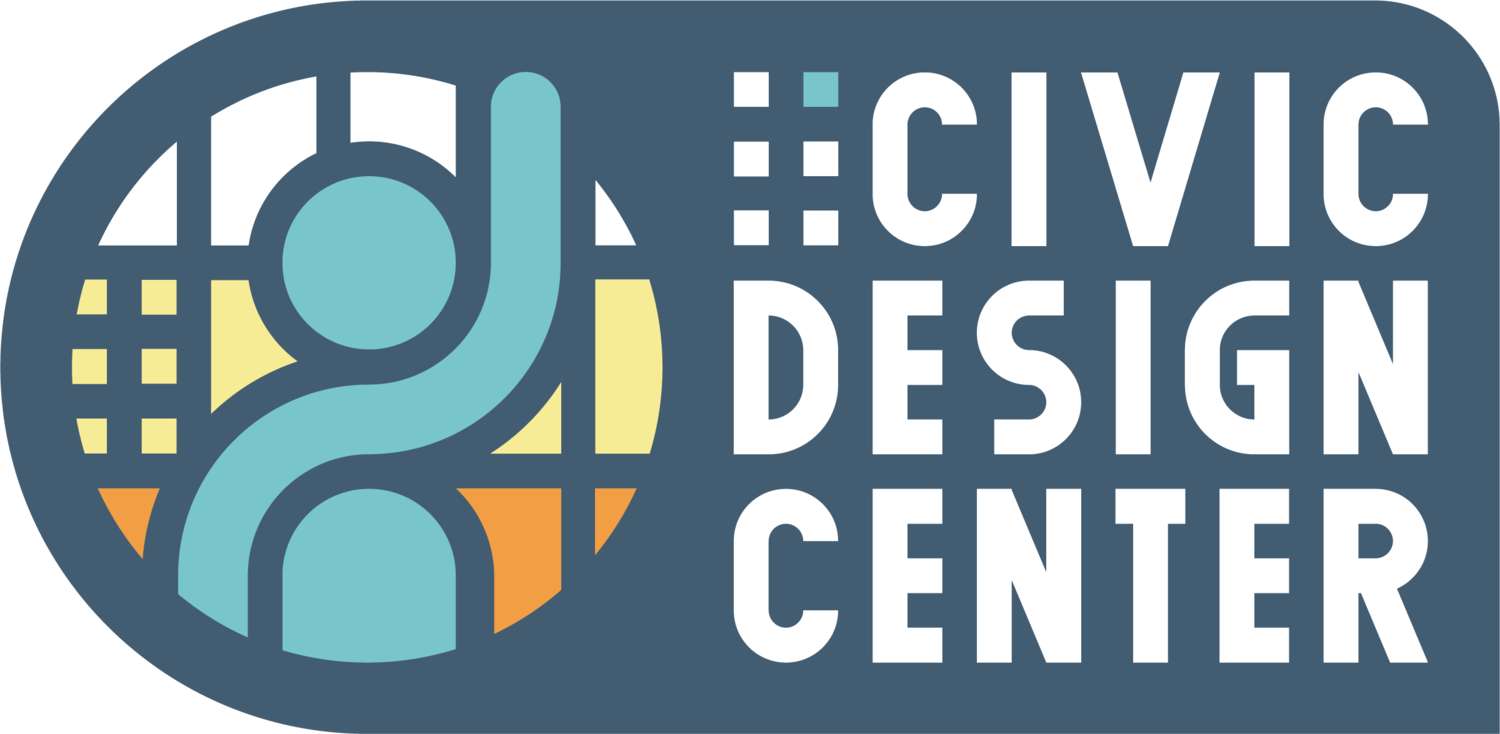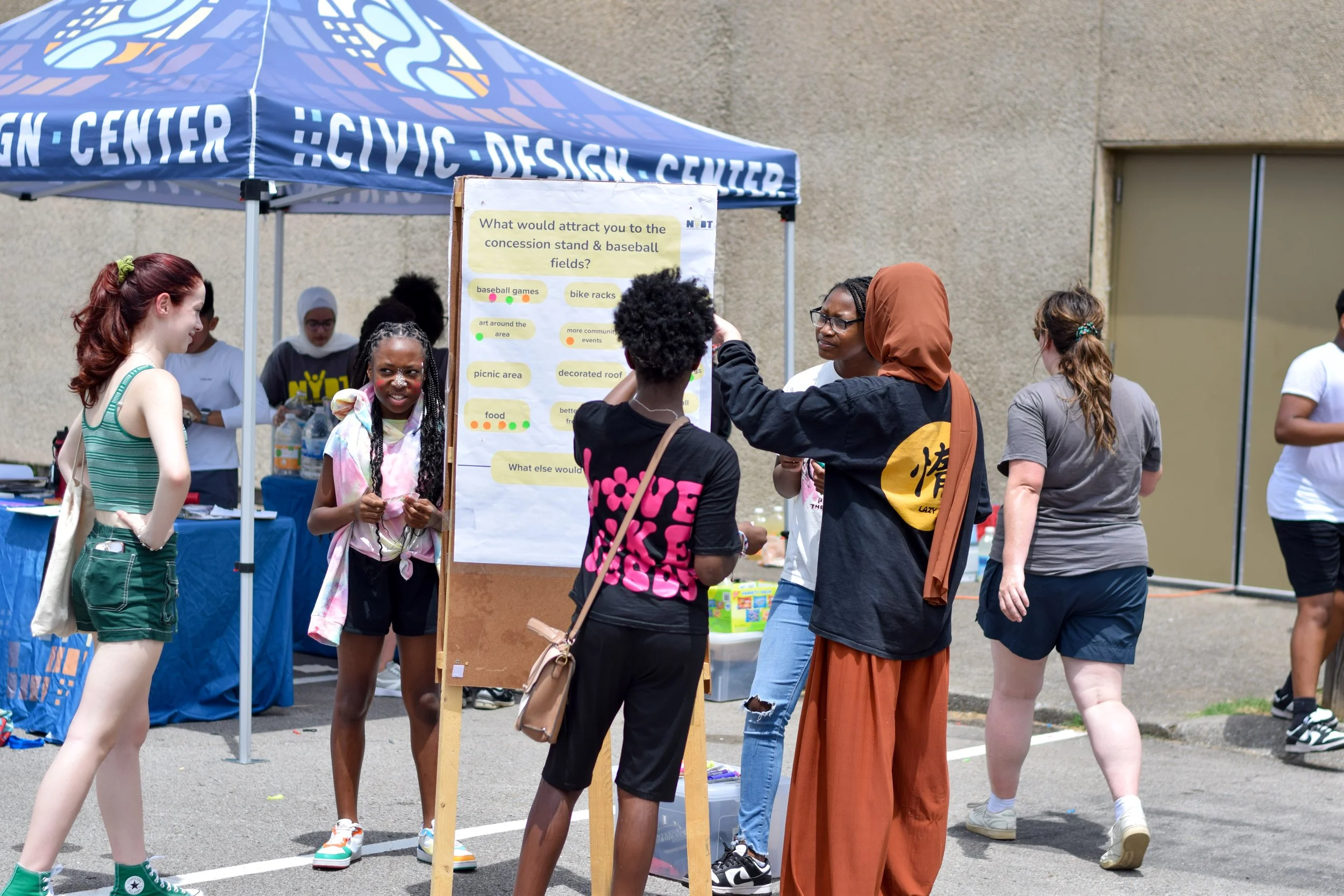Advocacy Agenda
2025-2026
Our Advocacy Agenda reflects the current status of local issues and highlights more specific milestones we hope to achieve this fiscal year. While we work with communities throughout Tennessee and the region, our advocacy efforts are based primarily in our city of Nashville.
The Agenda is always rooted in our Guiding Principles for Civic Design. Since the Principles are often extremely interconnected, advocating for one issue often leads to a combined advocacy effort in an adjacent issue.
COMMUNITY INVOLVEMENT
Follow planning, design and development processes that are grounded in community involvement.
NEIGHBORHOOD IDENTITY
Strengthen the unique identities of neighborhoods that reflects their people, history, and culture.
CELEBRATE STREETS
Celebrate streets as places that address neighborhood needs and facilitate community interactions.
COMMUNITY INVOLVEMENT
Belonging should be an active effort across all public engagement processes. The true meaning of equity would call for deeper engagement with groups that are typically left out of planning and design decisions.
Why Now? The Civic Design Center participated in a major project called Imagine Nashville that was completed to develop a “bold and inclusive vision for the future of the city.” Our team led the efforts to survey youth across the city and compare their hopes and dreams with those of Nashville adults. Imagine Nashville shed light on something that concerned us. While 78% of adults believe they somewhat or strongly belong in Nashville, only 60% of youth agree that they belong here. The youth are concerned about the future with one of their top concerns being whether or not they will be able to afford to live here. Both youth and adults disagree that “growth is making things better.”
On top of this research, many identities in Nashville are being left behind. Beyond just income, communities that identify as seniors, LGBTQ+, and/or African American/Black reported feeling this way. In a divided political landscape and growing concerns about the wellbeing of our neighbors, including our homeless and immigrant populations, our goal as an organization is to focus on bringing the community together so we can shape places for all. We believe that by bringing these issues to the forefront, we can advocate for safer and supportive design solutions within neighborhoods.
ACTIVE EFFORT
Involve youth as local experts in local planning and design practices to improve long-term rates of belonging in young generations’ commitment to their neighborhoods
Active Effort
Support policy and design efforts that provide safe spaces and resources for those whose belonging is under threat
CONTINUED Effort
Advocate for zoning that supports Missing Middle Housing (duplex, triplex, and quadplexes)
NEIGHBORHOOD IDENTITY
While it should be rooted in historic culture, identity will always evolve in neighborhoods as new generations are born and move into an area. Trust building will need to evolve alongside neighbors. Working towards trust building starts with listening then giving community members a choice.
Why Now? “Choice” has been an important component to Nashville’s recent transportation plan that Nashvillians by referendum in 2024. Trust in government processes can only come through follow-through on promises, but it is going to take some time to build out a system that will give the opportunity for Nashvillians to have more choice when it comes to how they move around the city. In the meantime, the Choose How You Move team is undergoing a study for the Jefferson Street corridor to deepen community involvement efforts and discover what improvements community members actually want to see in a Complete Streets implementation. The Civic Design Center has been tasked with managing a new community ambassador program, where neighbors are paid hourly to lead the direct engagement efforts. Trust needs to be rebuilt and it starts with high quality community engagement before implementation.
In a different realm of community choice, there has long been a debate about the future of the Nashville Fairgrounds, which was originally established over a hundred years ago as Cumberland Park. The original park was home to horse-racing, but it was eventually paved over to make way for a short-lived NASCAR track. There are conflicting studies that show the community’s preference on the future of the Fairgrounds, so the Design Center has joined a coalition of local organizations and neighborhood associations that are advocating for a referendum where Nashvillians would have the choice to decide it’s next chapter.
Active Effort
Manage a paid community ambassador program to lead thorough stakeholder and community engagement for the Choose How You Move Jefferson Street Corridor Study
Active Effort
Advocate for a referendum that provides voters with the choice to decide whether the Nashville Fairgrounds should remain required to accommodate a speedway or create the opportunity for other land uses
CELEBRATE STREETS
Streets should be more than just infrastructure for cars to use. They should support emotional human connection, feelings of safety, and encourage more active modes of transportation.
Why Now? The Civic Design Center originated from a major advocacy effort to envision a more human-centered street design for the future Franklin Corridor, now Korean Veterans Blvd. 30 years later, community members and advocates have been criticizing the discordance between modern multimodal priorities and the proposed 6-lane road design for the East Bank Blvd. Since the Imagine East Bank Vision Plan was released in 2022, there has been continued debate on the direction of the East Bank Blvd. This past fiscal year, the Civic Design Center participated in many partnership efforts to expand the public dialogue around the original three street design options in the Imagine East Bank Plan that included two 4-lane street design options. As a part of that effort, it became clear that a larger design conversation needs to happen.
Metro departments, including the Nashville Department of Transportation and Planning have kicked off the collaborative 3MP project, which stands for Multimodal Master Plan for which both our staff and a Nashville Youth Design Team member are on the steering committee. The project will better define the use of “streets,” determining the contribution of both public and private partners, ultimately creating a more granular classification hierarchy for how streets serve their varying purposes. Our role in this project is to make sure street design clearly serves its context, but also goes further to encourage connectivity to greenways. Relatedly, our work on the Multimodal Plan of Nashville will complement this formal planning effort by exploring a city-wide multimodal network inspired by the original vision in The Plan of Nashville.
Active Effort
Advocate for a safer East Bank Boulevard design, particularly one that facilitates more pedestrian interaction
Active Effort
Amplify the Multimodal Plan of Nashville as part of the 3MP to encourage more street connections, including neighborways, to greenways




